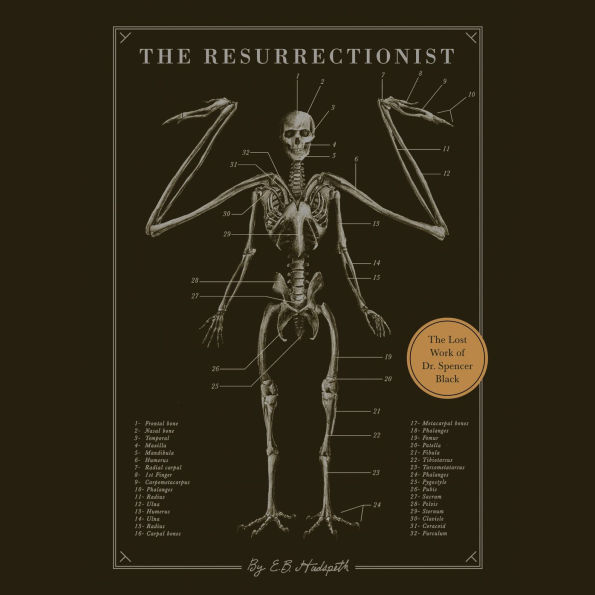This macabre tale-part dark fantasy, part Gray's Anatomy-tells the chilling story of a man driven mad by his search for the truth, with hypnotic and horrifying images.
Philadelphia, the late 1870s. A city of gas lamps, cobblestone streets, and horse-drawn carriages-and home to the controversial surgeon Dr. Spencer Black. The son of a grave robber, young Dr. Black studies at Philadelphia's esteemed Academy of Medicine, where he develops an unconventional hypothesis: that the mythological beasts of legend and lore-including mermaids, minotaurs, and satyrs-were in fact humanity's evolutionary ancestors. And beyond that, he wonders: what if there was a way for humanity to reach the fuller potential these ancestors implied?
The Resurrectionist offers two extraordinary books in one. The first part is a fictional biography of Dr. Spencer Black, from his childhood spent exhuming corpses through his medical training, his travels with carnivals, his cruel and crazed experiments, and, finally, his mysterious disappearance. The second part is Black's magnum opus: The Codex Extinct Animalia, a Gray's Anatomy for mythological beasts, all rendered in meticulously detailed anatomical illustrations.
This macabre tale-part dark fantasy, part Gray's Anatomy-tells the chilling story of a man driven mad by his search for the truth, with hypnotic and horrifying images.
Philadelphia, the late 1870s. A city of gas lamps, cobblestone streets, and horse-drawn carriages-and home to the controversial surgeon Dr. Spencer Black. The son of a grave robber, young Dr. Black studies at Philadelphia's esteemed Academy of Medicine, where he develops an unconventional hypothesis: that the mythological beasts of legend and lore-including mermaids, minotaurs, and satyrs-were in fact humanity's evolutionary ancestors. And beyond that, he wonders: what if there was a way for humanity to reach the fuller potential these ancestors implied?
The Resurrectionist offers two extraordinary books in one. The first part is a fictional biography of Dr. Spencer Black, from his childhood spent exhuming corpses through his medical training, his travels with carnivals, his cruel and crazed experiments, and, finally, his mysterious disappearance. The second part is Black's magnum opus: The Codex Extinct Animalia, a Gray's Anatomy for mythological beasts, all rendered in meticulously detailed anatomical illustrations.

Product Details
| BN ID: | 2940193390343 |
|---|---|
| Publisher: | Blackstone Audio, Inc. |
| Publication date: | 07/19/2025 |
| Edition description: | Unabridged |
Videos


